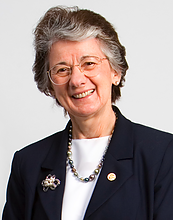 Research by a renowned University of Maryland microbiologist is enabling an international aid effort to predict and stop potential epidemics of cholera.
Research by a renowned University of Maryland microbiologist is enabling an international aid effort to predict and stop potential epidemics of cholera.
Rita Colwell, a Distinguished University Professor in the University of Maryland Institute for Advanced Computer Studies (UMIACS), is collaborating with the United Nations and the British government to help curb the waterborne bacterium Vibrio cholerae in Yemen and other affected regions.
The World Health Organization estimates that the disease–which can be deadly if left untreated–infects 1.3 million to 4 million people annually.
The team is using data from NASA satellites to create risk maps based on several factors including air and water temperatures, precipitation, severity of natural disasters, sanitation and hygiene infrastructure, and population density.
Colwell first realized that satellite data could be used to forecast potential cholera outbreaks in 1995. Seeing her research put into action to save lives “is the greatest satisfaction any scientist, mathematician, or engineer could possibly have … essentially a dream fulfilled,” she says.
Anwar Huq, a research professor at the University of Maryland’s Pathogen Research Institute, is also one of the lead scientists on the project.
Last spring, aid workers distributed sterilization and medical supplies in Yemen based on the team’s model that predicted the locations and timing of cholera outbreaks.
The country is currently experiencing a civil war and the worst humanitarian aid crisis in the world, says the UN.
The team’s model will be applied to other impoverished regions to prevent and assist with more cholera outbreaks.
“It is truly satisfying to be able to see one’s research, including that done here at the University over the past forty plus years, incorporated into an effective public health success on a global scale,” says Colwell. “I certainly hope other governments, NGOs, and the United Nations will incorporate our model into their ongoing work.”
Go here to see a video of the latest work by Colwell and others involved in this project.
—Story by Maria Herd